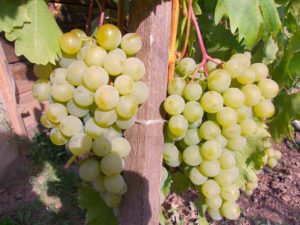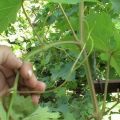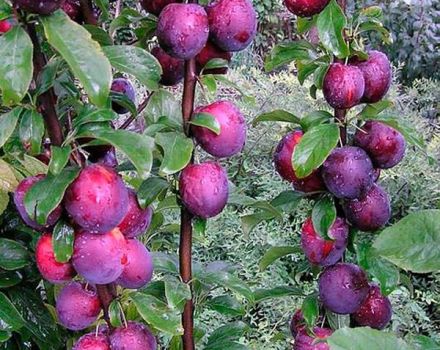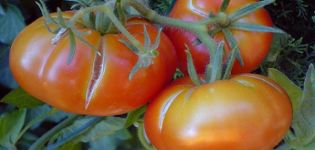Description of hybrid grape varieties Pearls Black, Pink, White and Saba
A universal variety of grapes Pearls has several subspecies, which are widespread in Europe. The variety is appreciated for its unpretentious care, high taste characteristics and resistance to temperature extremes. The grape vines are suitable for decorative purposes, and the fruits are eaten fresh or processed.
Content
- 1 Breeding history
- 2 Botanical and technical description of the variety
- 3 Hybrid forms
- 4 Advantages and disadvantages of the view
- 5 Where and when to plant grapes
- 6 Scheme and landing dates
- 7 Do I need to cover for the winter
- 8 When to wait for the first fruiting
- 9 Collection and use of berries
- 10 Common Black Pearl Disease
Breeding history
The Pearl grape variety was bred at the beginning of the 20th century by breeders from Hungary. The first fruits were grown from unknown seeds and outwardly resembled rounded pearls with a pronounced waxy coating. Later, by crossing the Hungarian Muscat and Ottonel Muscat, a specimen with identical characteristics was obtained, which helped to establish a parental pair of grapes. Thanks to the variability of use and frost resistance, the variety has become widespread in the territory of Eastern European states and in Transcarpathia.
Botanical and technical description of the variety
Pearl vines have individual characteristics that set them apart from other varieties. Before growing plants, you should read the detailed description of the variety.
Vine and shoots
Young shoots turn purple. The upper part of the shoots is covered with cobweb pubescence. By the time they mature, the shoots turn brown.
Productivity and fruits
The Pearl grape is considered an early table variety that bears harvest in mid-summer. Rounded fruits are of medium size, amber color and thin skin. The pulp of the berries is valued for its peculiar taste with a predominance of nutmeg aroma.
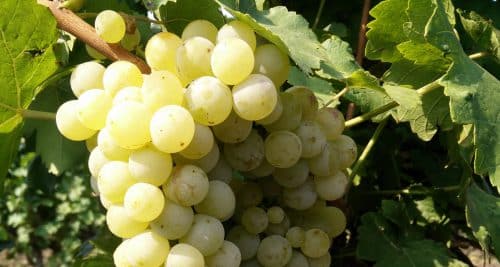
Hybrid forms
As a result of breeding studies, several hybrid subspecies of the variety have been bred. Each variety has distinctive properties and is suitable for growing in specific conditions.
Grape White Pearl
An early ripe variety that yields a harvest after 4 months of ripening. The berries are yellowish in weight 3-4 g. The taste is rich, sweet. The sugar content is 16%. White pearls are famous for their increased resistance to cold, down to -25 degrees. This grape variety is rarely susceptible to disease and tolerates the adverse effects of harmful insects.
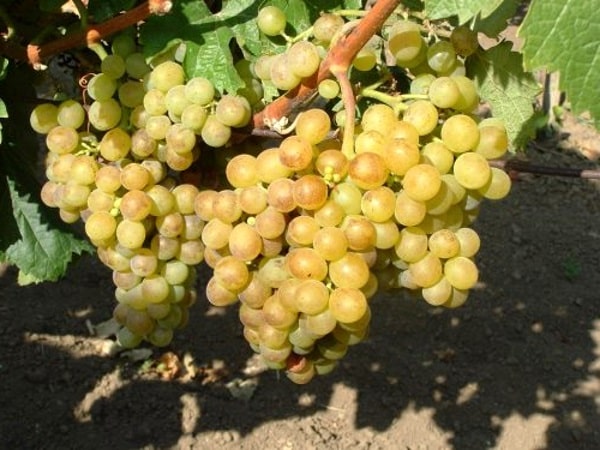
Pearl Saba
Compared to other hybrids, Saba pearls yield less harvest.The bunches are medium in size: the length is 12-17 cm, the width is 8-10 cm. The fruits have a rounded shape, thin skin, and a weak waxy bloom. The pulp is juicy, tender, with a pleasant nutmeg aroma.
Pink
The Pink Pearl variety is suitable for growing in mid-zone conditions with constant frosts. The grape bushes are famous for their high resistance to cold and changeable temperatures. Plants can withstand temperatures down to -30 degrees. The percentage of ripe fruits reaches 95%. The crop is used for making wine, juice or fresh consumption.
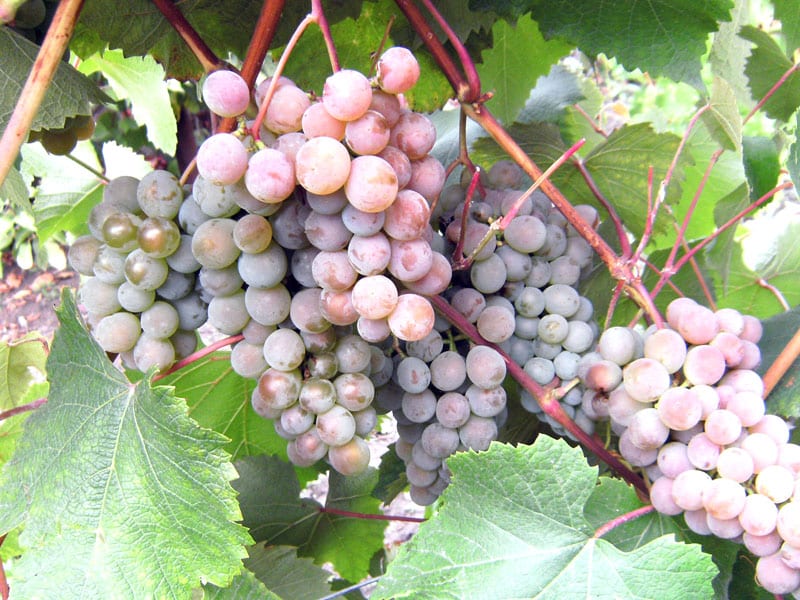
The black
Black pearls are a technical grade used primarily in winemaking. The fruits have a beneficial effect on the human body by strengthening the walls of blood vessels, preventing the formation of blood clots and improving the functioning of the circulatory system.
Advantages and disadvantages of the view
The Pearl Grape has a number of positive and negative characteristics. Benefits include:
- high rate of resistance to frost;
- early maturation;
- minimal susceptibility to diseases and pest attacks;
- ease of disembarkation and subsequent care.
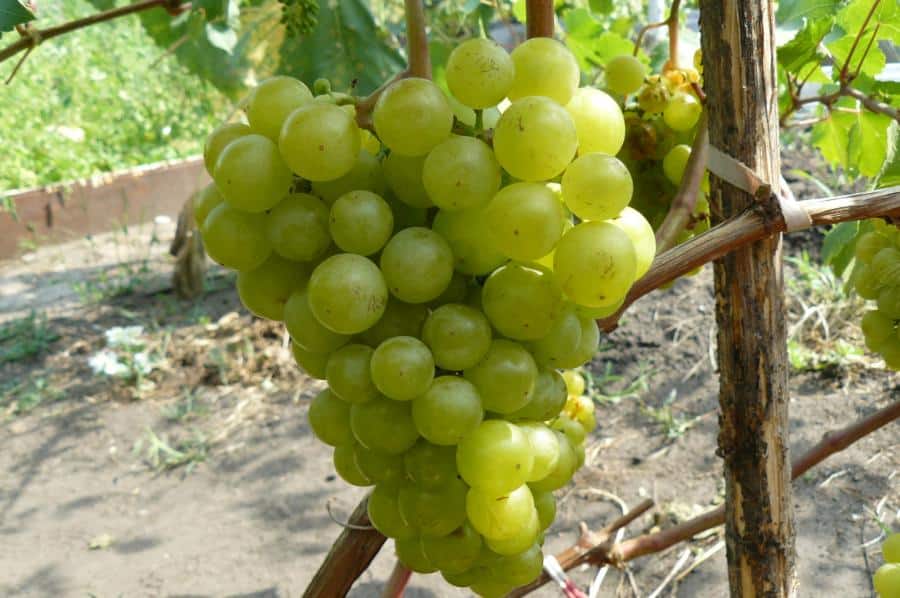
The main disadvantage of the variety is its low transportability. If the crop is not harvested on time, the fruits will lose their flavor characteristics. In case of overloading the vines, the berries in the bunches begin to shrink.
Where and when to plant grapes
To get a harvest, it is recommended to plant grapes in the middle of spring, eliminating the possibility of recurrent frosts. For the Pearl cultivar, the preferred areas are permanently sunlit, located on peaks or hilly areas. Loamy or sandy loamy soils with neutral acidity contribute to proper growth.
Growing areas
Optimal conditions for the growth of Pearls grapes are observed in European countries and the Transcarpathian region. When grown in other regions, more careful maintenance is required so that the bushes grow healthy and yield consistently.
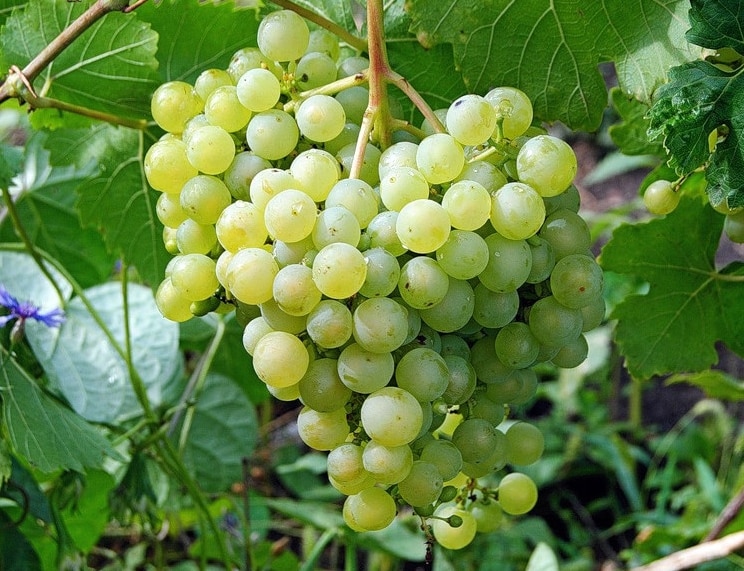
Scheme and landing dates
It is better to start planting grapes in the second half of spring, when the temperature is fixed at a positive mark and there is no risk of cold weather returning. During the warm period, the seedlings will take root and harvest in the summer. A distance of at least 2 m is left between the rows, and 1.5 m between the bushes.
Care rules
The process of caring for seedlings involves periodic inspection of plants, timely watering, soil treatment and pruning of bushes. Continuous care has a beneficial effect on the quality and quantity of the crop, ensuring its stability and improving the taste characteristics.
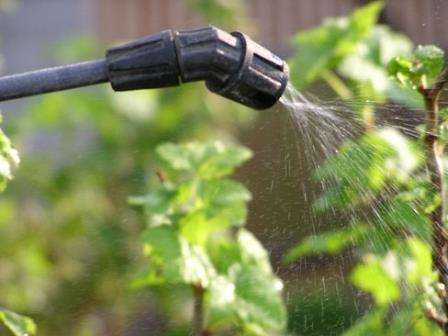
Loosening the soil
In early autumn, before the first frost, deep loosening of the soil around the bushes is carried out. The earth is dug to a depth of 0.7 to 1 m.
In the process of loosening, the top layer of soil with fertilizers moves down, and the bottom rises to the surface to saturate with nutrients.
Irrigation mode
Vineyards are drought tolerant and able to grow without frequent watering, but moistening the soil and soil contributes to increased yields and vigorous growth. The need for artificial irrigation arises in arid regions, where it rarely rains. Watering the vines with water, overmoistening should be avoided.

Fertilizer
If, when planting seedlings, fertilizing is introduced into the ground, then it is not necessary to fertilize the plants for the next 3-4 years. Adult bushes require nutrient components for active fruiting. It is recommended to apply fertilizers in spring and autumn using phosphorus, nitrogen and potassium fertilizers.
Vine formation
To give a decorative appearance and remove old branches, it is necessary to periodically prune the vines. It is recommended to carry out the formation in the spring so that frosts do not destroy the bushes. To carefully cut off some of the foliage and branches, you need to use a pruner.
Do I need to cover for the winter
Shelter for the winter period is necessary in case of severe frosts or after winter pruning of bushes for additional protection. As a covering material, you can use a dense burlap or other similar fabric. Covering plants, you should provide air access so that the bushes do not begin to rot.

When to wait for the first fruiting
Pearl vines begin to produce their first harvest in the 4th year of cultivation. The berries ripen in bunches in mid-July, subject to proper care, suitable climatic conditions and timely fertilization.
Collection and use of berries
The grapes must be harvested at certain times, since late harvesting leads to a partial loss of the crop, and the bunches cut off ahead of time are not subject to long-term storage. With timely collection, the berries reach their limit values in terms of taste and the presence of nutritional components. After the grapes are ripe, it is enough to cut the bunches with a pruner or garden shears.
The berries can be eaten fresh or used to make wine and juice. Also the grapes must be frozen. If you want to leave the crop for storage, it is recommended to store it in a cool dark place.
Common Black Pearl Disease
With improper care or negative external influences, the risk of grape disease with downy mildew increases. This disease is the most common and leads to the gradual damage and death of the vine. The primary signs of the disease are oily spots on the leaves, which are constantly increasing in volume. At high night temperatures, a grayish coating forms on the back of the sheets. All parts of the plant are affected by the disease.
To combat downy mildew, it is required to spray the green part of the vineyard with preparations of the fungicidal category. It is recommended to carry out processing before flowering.
